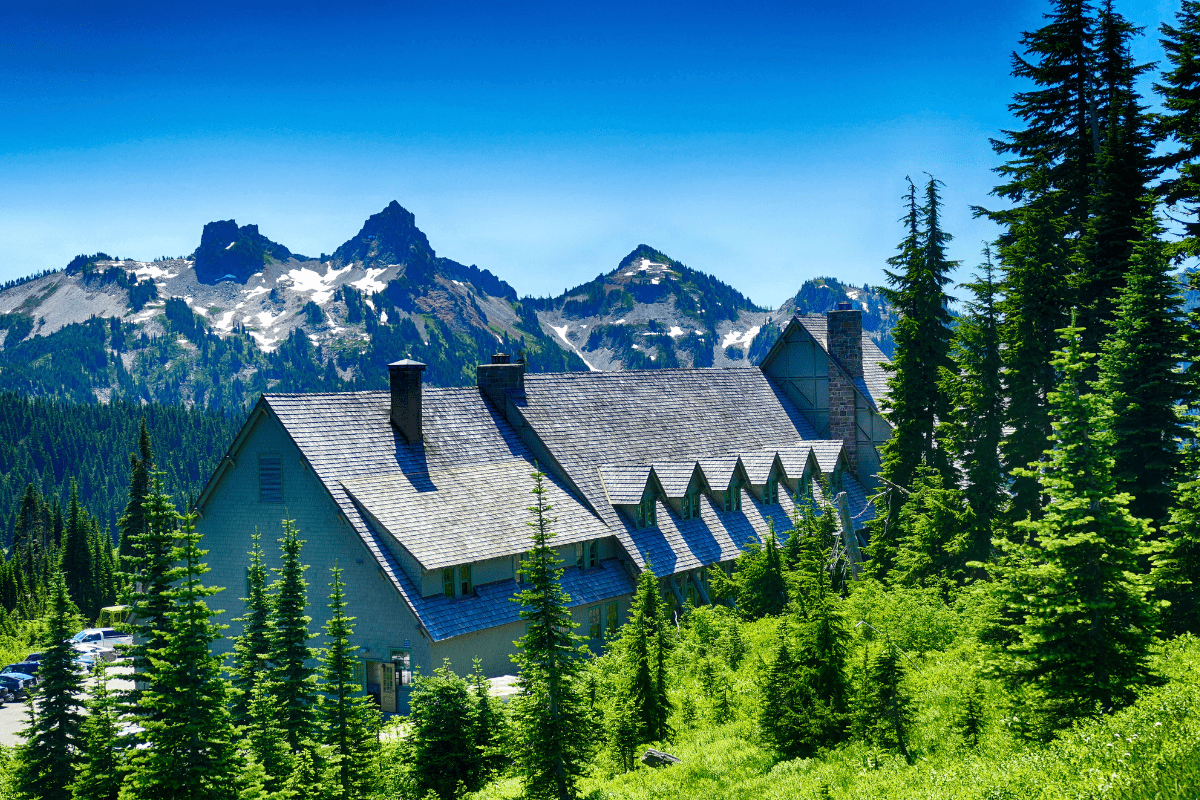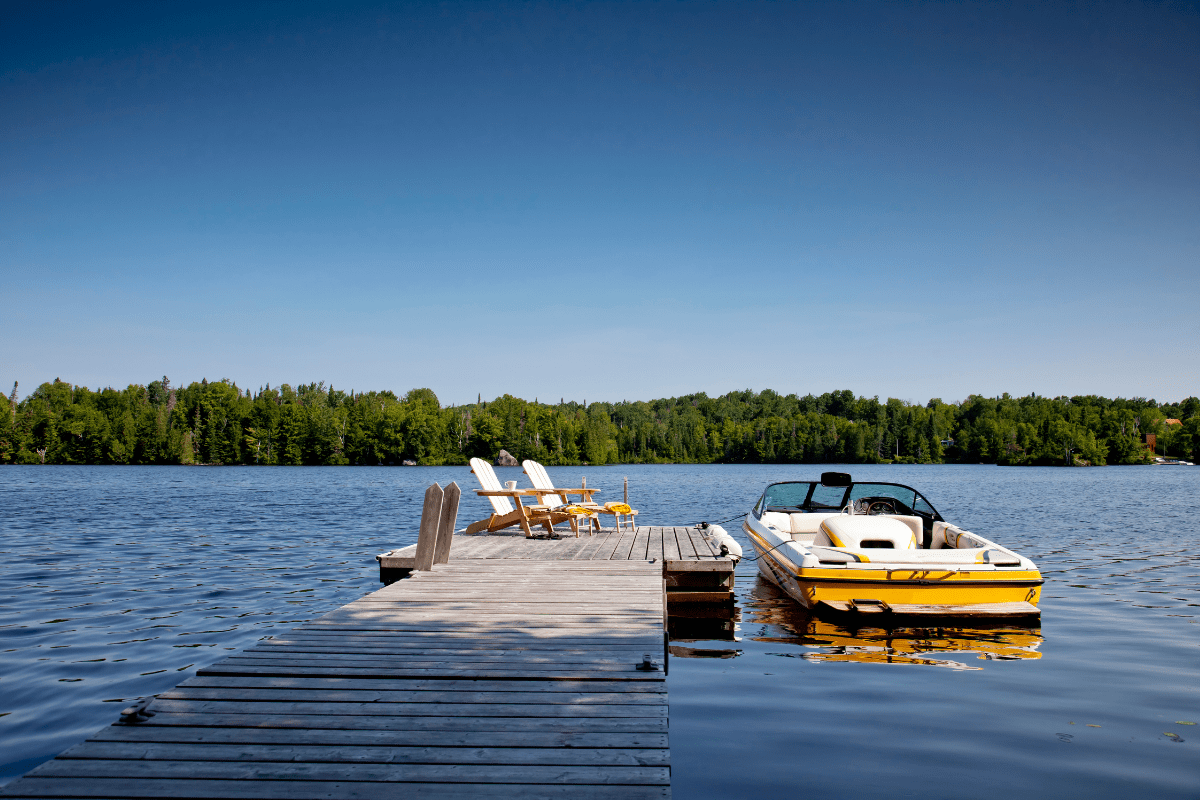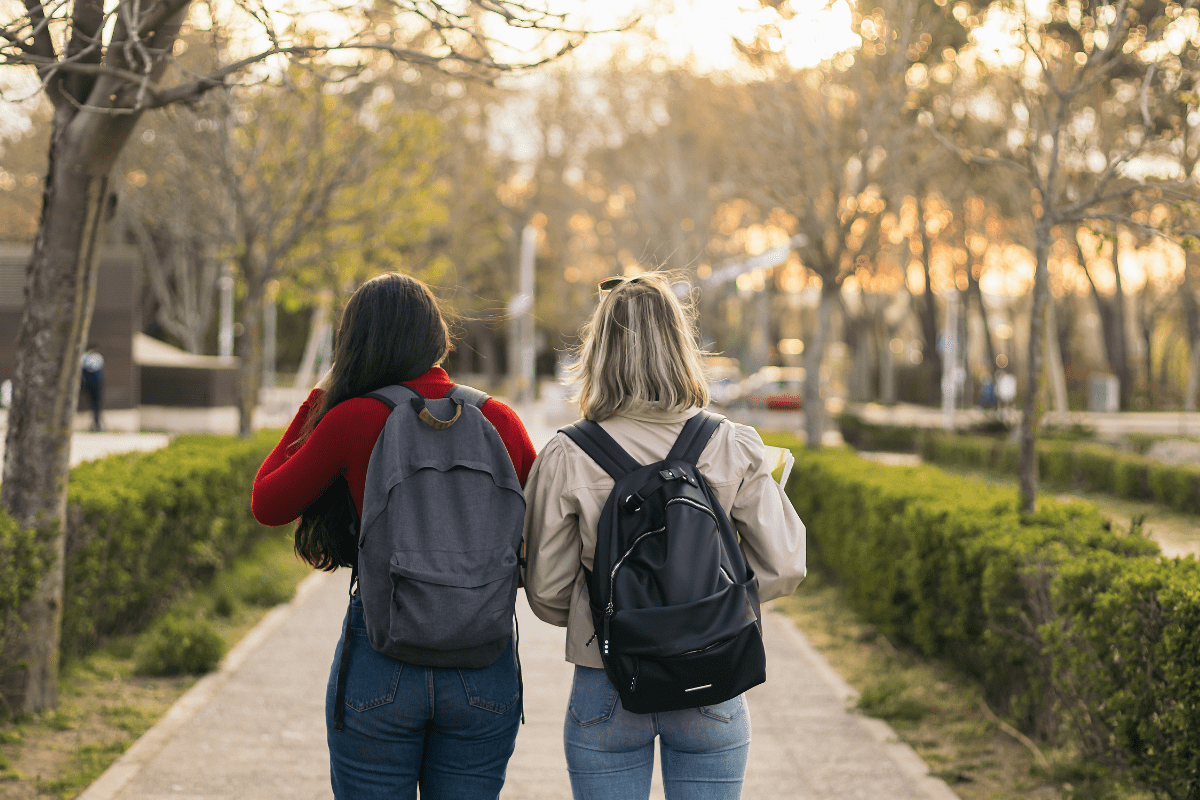Imagine stumbling upon 300,000 people photographing tulips, watching hydroplanes scream past at 220 mph, or joining a basketball game on literally any downtown street corner.
Welcome to Washington's festival scene, where celebrations range from intimate island strawberry parties to massive urban spectacles drawing quarter-million crowds.
Whether you're into garlic-butter mussels, Japanese drumming, or watching people launch kites the size of school buses, this state has a festival that'll make your Instagram followers deeply jealous.
Spring blooms with color and culture
Spring in Washington kicks off with some of the most photogenic festivals you'll ever experience, starting with fields of flowers that look like Mother Nature went wild with a paint-by-numbers kit.
Skagit Valley transforms into tulip wonderland
The Skagit Valley Tulip Festival runs the entire month of April, and yes, you'll spend half that time stuck behind someone's grandma driving 15 mph while she films out the window. This self-guided driving tour spans five participating farms, each charging separate admission fees… because apparently tulips don't believe in combo deals.
RoozenGaarde, the big kahuna of tulip farms, spreads across 50 acres with over 200 varieties. Weekday admission runs $16, but jump to $20 on weekends when everyone and their photography club descends. The newer Skagit Acres offers a more intimate experience with just 3 acres and 18 varieties, charging $18 for adults and $10 for kids who will definitely try to pick the flowers when you're not looking.
Pro tip: Visit on a weekday if you value your sanity. The 60-mile drive from Seattle typically takes 1.5 hours but can stretch to "are we there yet?" territory on sunny weekends. Pack waterproof boots because those stunning photos don't show the mud situation after April showers. Peak bloom hits mid-April, when the fields create a patchwork quilt against the Cascade Mountains that'll make you understand why 300,000 visitors brave the traffic.
Eastern Washington celebrates apple heritage
While western Washington goes nuts for tulips, the eastern side throws the state's oldest festival in Wenatchee. The Washington State Apple Blossom Festival, now in its 106th year, runs from late April through early May and requires approximately 800 volunteers who probably all know each other from high school.
The Stemilt Grand Parade on May 3 starts at 11 AM, featuring the kind of wholesome Americana that makes you want to buy apple pie and wave tiny flags. Festival organizers describe it as "a celebration of our people, our heritage, and of course, our fruit industry," which includes honoring the region's significant Latino community.
Here's what makes this festival special:
- 11-day Food Fair at Memorial Park
- Traditional pancake breakfast (60+ years running)
- Free parade bleacher seating
- Genuine small-town community spirit
- Apple-themed everything (seriously, everything)
Book your hotel yesterday because this remains Eastern Washington's premier spring event, and there aren't that many hotels to begin with.
Seattle embraces cultural celebrations
Seattle's spring festival season peaks with two very different but equally beloved events. The 50th Annual Cherry Blossom & Japanese Cultural Festival (April 11-13) offers free admission to watch sumo tournaments, which is exactly as entertaining as it sounds. The festival traces back to 1976 when Japan's Prime Minister gifted 1,000 cherry trees to Seattle, probably not expecting they'd inspire thousands of people to attempt amateur ikebana.
Then Memorial Day Weekend brings the Northwest Folklife Festival, where 250,000 people descend on Seattle Center for four days of "hey, my friend's band is playing at 2 PM on the Bagley Wright Theatre steps." With 400+ performances across 26 stages and 6,000 artists, you'll discover musical genres you didn't know existed. Admission is free, though they suggest a $20 donation to keep this beautiful chaos running.
The 2025 theme explores "Ikigai," which festival organizers explain as encouraging people to show up authentically and trust the process… basically, it's permission to dance badly in public.
Summer brings seafood, music, and serious crowds
Summer in Washington means festival season hits overdrive, with events virtually every weekend celebrating everything from mussels to indie rock.
Maritime festivals showcase coastal treasures
March technically sneaks into spring, but Penn Cove MusselFest (March 8-9) feels like summer's appetizer. The $50 weekend chowder tasting pass includes a commemorative mug and spoon, plus access to samples from 11+ restaurants competing for chowder supremacy. The real highlight? Forty-five minute boat tours of the actual mussel farms for $20, where you'll learn more about bivalve cultivation than you ever thought possible.
Fast forward to September for Bellingham SeaFeast (September 27-28), offering free admission to watch Lummi Nation members prepare salmon over traditional fire pits. The Dockside Market lets you buy seafood directly from fishing families, and Sunday's free Salmon Run 5K encourages maritime costumes… yes, people dress as fish and run 3.1 miles. Welcome to the Pacific Northwest.
Urban festivals take over city streets
Capitol Hill Block Party underwent a major change for 2025: it's now 21+ only, presumably because someone finally got tired of checking fake IDs. Running July 19-20, this 27th annual street festival spreads across seven stages, including legendary venues like Neumos and Cha Cha. Headliners Thundercat and Porter Robinson will perform while thousands of Seattle's coolest people pretend they've totally heard of the opening bands.
Meanwhile, Bite of Seattle (July 25-27) celebrates 40 years of organized gluttony with free admission to Seattle Center. Drawing 355,000 people over three days, it features 300+ food vendors and 65+ musical acts. The festival started in 1982 during the recession to help struggling restaurants, proving that Seattleites will support any cause that involves eating.
Festival organizers proudly note it has "served as the gathering place for local and regional businesses to foster community connections and celebrate the Pacific Northwest's food scene" for four decades. Translation: come hungry, leave happy.
Seafair creates Seattle's unofficial holiday
Seafair Weekend Festival (August 1-3) might be Seattle's most Seattle festival. Where else can you watch the Blue Angels while boats race at 220 mph and thousands of vessels create a "log boom" party on Lake Washington? Friday offers free admission for everyone, with weekend prices ranging from $22-85 depending on how close you want to get to the action.
After 76 years, Seafair has earned its reputation as "one of the area's largest boating events, air shows, and festivals all rolled into one." It's basically a city-wide excuse to skip work and play on the water.
Eastern Washington hosts unique celebrations
Spokane Hoopfest (June 28-29) holds the title of world's largest 3-on-3 basketball tournament, transforming downtown into 425 courts across 45 city blocks. With 6,000 teams and 225,000 fans, it generates a $47 million economic impact while proving that yes, you can play basketball literally anywhere.
The 2003 Agora Award committee perfectly captured its spirit: "No other single event brings together people of such diverse cultures, economic conditions, and ages for a common purpose." Spectator admission is free, though players need to register for teams. The city even runs special "Hoop Loop" transit to navigate the basketball madness.
Down in Walla Walla, wine takes center stage with Celebrate Walla Walla Valley Wine (June 19-21). After being named "Best Wine Region in the US" by USA Today readers, the area's 120+ wineries pull out all stops with collaborative dinners and vineyard tours. You can reach wine country via three daily Alaska flights from Seattle or enjoy a scenic four-hour drive through landscapes that'll make you consider a career change to winemaking.
Unique agricultural celebrations
The Sequim Lavender Festival (July 19-21) offers free admission to the main festival, though individual farms charge $5-10 for tours. With 120+ artisan booths and 20+ lavender varieties, Sequim legitimately claims the title "Lavender Capital of North America." Victor Gonzalez of Victor's Lavender Farm, "the last remaining of the original Sequim lavender farmers," brings decades of expertise to this fragrant celebration.
Way out on the Olympic Peninsula, Makah Days (August 22-24) offers free admission to its 101st anniversary celebration. Traditional war canoe races on the Strait of Juan de Fuca, salmon bakes, and the Bahokus Peak Challenge create a weekend honoring the "people generous with food." As one 2024 speaker declared with pride: "Makah's on duty! And Makah will revive the whale hunt, we are a whaling people."
Fall and specialty festivals round out the calendar
Washington saves some of its best celebrations for fall, when the weather cooperates and summer tourists head home.
Maritime heritage takes center stage
The Port Townsend Wooden Boat Festival (September 5-7) claims North America's largest wooden boat celebration title. Early bird pricing rewards planners with $23 single-day passes or $45 for the full weekend before June 1, jumping to $30 and $55 after. Kids 12 and under enter free with paying adults, making this surprisingly family-friendly for a festival centered on expensive boats.
With 300+ vessels and 100+ demonstrations, the festival benefits the Wooden Boat Foundation's mission to preserve maritime heritage. Labor Day weekend means booking accommodations approximately last February.
Kites dominate the coast
The Washington State International Kite Festival (August 18-24) runs a full week in Long Beach, drawing 100,000+ visitors to watch people do improbable things with fabric and string. As the world's longest-running kite festival, it attracts international teams who make your childhood kite-flying attempts look adorably amateur.
Giant inflatable kites, Rokkaku battles (yes, kite fighting is real), and the beloved Teddy Bear Drop for kids create non-stop entertainment. Night shows feature illuminated kites against the coastal sky, while consistent Pacific winds provide ideal conditions. Best part? It's completely free, though festival organizers warn to pack windbreakers even in August.
Cultural celebrations honor heritage
The Pacific Northwest Scottish Highland Games (July 25-27) in Enumclaw celebrates its 78th year as the 6th oldest continuous Highland Games in America. Friday evening offers free admission, perfect for testing whether you actually enjoy bagpipe music before committing to a full weekend.
Traditional events include:
- Caber toss competitions
- Hammer throw demonstrations
- International bagpiping judges
- Clan gatherings
- Highland dancing
- Vendors selling kilts
Past president Colin Mathieson describes it as "filled with friendly, passionate people who want to continue to nurture pride in Scottish heritage in the PNW." Even if you're not Scottish, it's worth attending just to watch someone throw a telephone pole.
Planning your festival adventure
Successfully navigating Washington's festival scene requires more strategic planning than you'd expect, especially if you're trying to hit multiple events.
Transportation varies wildly by location
Seattle festivals benefit from light rail stations at Capitol Hill and University District, though street festivals mean road closures that'll test your navigation skills. Eastern Washington typically requires driving, with Spokane offering special event transit like the Hoop Loop during Hoopfest.
Island destinations involve Washington State Ferries, adding an extra adventure layer. Penn Cove MusselFest attendees should use the Mukilteo-Clinton route, while Vashon's Strawberry Festival requires ferries from West Seattle, Tacoma, or Port Orchard. Pro tip: ferry lines during festival weekends can rival Disneyland.
Book accommodations before everyone else thinks of it
Some festivals essentially take over entire towns. The Skagit Valley Tulip Festival's peak weekends, Port Townsend's Labor Day boat celebration, and Walla Walla wine events book solid months in advance. Wenatchee during Apple Blossom Festival? Good luck finding anything under $200 a night.
Interestingly, Quincy became Airbnb's top worldwide destination during summer festivals, proving that even tiny towns get overwhelmed. Consider staying in larger nearby cities and driving in, or embrace camping if the festival gods smile upon you with good weather.
Budget from free to financially irresponsible
Washington's festival scene accommodates every budget level. Free admission includes major events like Northwest Folklife, Bite of Seattle, and most cultural celebrations. Mid-range options typically run $45-85 for weekend passes, while premium experiences like SIFF's Platinum Pass hit $1,660 for those who consider film festivals a lifestyle choice.
Spring requires layers and rain gear unless you enjoy looking like a drowned rat in photos. Summer demands serious sun protection… nobody wants a Seafair sunburn shaped like tank top straps. Coastal events need windbreakers year-round because Pacific Ocean breezes don't care that it's August. Fall generally offers perfect weather, though September can still surprise with random heat waves.
Whether you're photographing tulips while questioning your life choices in traffic, watching boats race at dangerous speeds, or trying to understand why anyone would toss a caber, Washington's festivals offer experiences you won't find anywhere else. From intimate island celebrations to massive urban spectacles, each event provides a window into what makes Pacific Northwest culture beautifully weird. Just remember to book hotels early, pack for every possible weather scenario, and prepare to eat your body weight in festival food. Your Instagram feed will thank you, even if your wallet won't.





